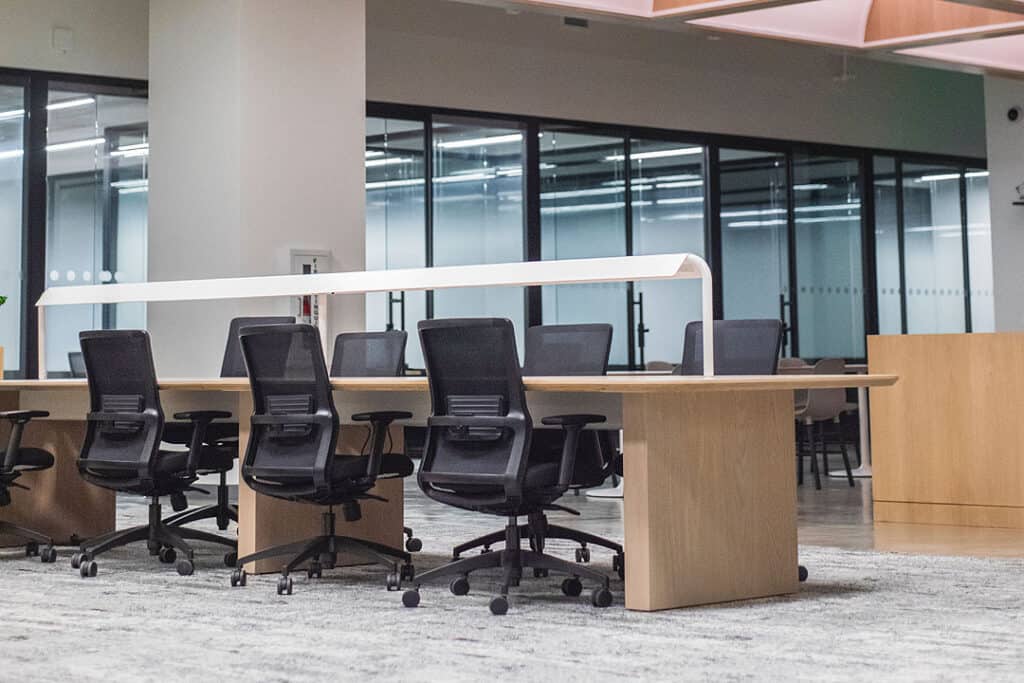
The office market vacancy rate is expected to remain high but is projected to decrease to single digits starting in 2028, Leechiu Property Consultants said.
The firm expects vacancies to decrease to 17% in 2025 from 19% in 2024, then to 14% in 2026, 11% in 2027, and finally to 6% in 2028.
The closest year with a single-digit vacancy rate was 2019, at 6%.
“This year, we will start to see pipeline supply drop, but unfortunately, there are still 800,000 sq.m. (square meters) of buildings that will be injected today,” Leechiu Property Director for Commercial Leasing Mikko Barranda said during a media briefing on Apr. 15.
The firm reported an 18% vacancy rate in the first quarter (Q1), a slight improvement from 19% in the same period last year. It is similar to the 18% yearly vacancy rate in 2023.
This is equivalent to 3.2 million sq.m. led by Ortigas, Mandaluyong, and San Juan at an 18% vacancy rate and 529,000 sq.m. vacant spaces.
Meanwhile, total demand surged by 25% to 331,000 sq.m. from 264,000 sq.m. in the same period last year, marking the highest uptake since the pandemic. This increase was driven by traditional offices, particularly government agencies, which accounted for 151,000 sq.m. and held a market share of 46%.
“Many of the departments that are in 30-year-old buildings are looking to renovate, modernize, upgrade, and a few of those large transactions did take place in the first quarter of 2024,” Mr. Barranda said.
The demand for government offices, with transactions 1,000 sq.m. and up, logged 36,000 sq.m. with nine recorded transactions.
Mr. Barranda added that these traditional offices have taken five to ten years and now see an opportunity to move into bigger or high-end buildings.
He was referring to the flight-to-quality phenomenon, where tenants seek higher quality spaces. Approximately 74% of tenants moved into Grade B spaces, while 26% opted for Prime and Grade A spaces.
Meanwhile, the demand for Information Technology and Business Process Management (IT-BPM) reached 125,000 sq.m. in the first quarter.
IT-BPM led the provincial demand with 83% to 154,000 sq.m.
“Business process outsourcing companies, despite whether they are hybrid, whether they are 70-30, 50-50, they are leasing space in the market,” Mr. Barranda said.
Despite regulatory changes and issues hounding the industry, the Philippine Offshore Gaming Operators sector’s total demand reached 55,000 sq.m. in the first quarter of this year. — Aubrey Rose A. Inosante
If you like this article, share it on social media by clicking any of the icons below.
Or in case you haven’t subscribed yet to our newsletter, please click SUBSCRIBE so you won’t miss the daily real estate news updates delivered right to your Inbox.
The article was originally published in Business World.







More Stories
Vista Land Celebrates 50 Years with Sandiwa: An Event Honoring Leadership, Legacy, and the Filipino Dream of Homeownership
Vista Land Celebrates Love Month in Ilocos Region
Vista Land Bridges Cebuano Heritage and Progress with Valencia by Vista Estates